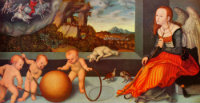Search:: Artists Alphabetically Artists by Country Artists by Century Artists by Movement
Flemish Painters
The geographic area known as Flanders used to be part of Belgium, Holland and regions in the northwest of France. The major Flemish towns associated with Flemish art were Utrecht, Ghent, Louvain, Tournai, Antwerp, Brussels, Liege, and Bruges.
Masters of Flemish Painting
Matthias Grünewald (1434-1494) Northern Renaissance
Jan van Eyck (1385 - 1441) Northern Renaissance
Quentin
Massys (1466–1530 Northern
Renaissance
Jan van Eyck (1385 - 1441) Northern Renaissance
Robert Campin 1375-1444 Northern Renaissance
Jan Provoost (1465–1529) Northern Renaissance
Joachim Patinir (1480 –1524) Northern Renaissance
Rogier van der Weyden (1399-1464) Northern Renaissance
Peter Paul Rubens (1577 - 1640) Baroque
Willem van de Velde the Younger (1633 – 1707)
Frans Hals (1580 - 1666) Baroque
Rembrandt van Rijn (1606-1669) Baroque
Jan Vermeer (1632 - 1675) Baroque
Meindert Hobbema (1638-1709) Dutch, Baroque
Hieronymus Bosch (1453 - 1516) Northern Renaissance
Pieter Brueghel the Elder (1525 - 1569) Northern Renaissance
Pieter Brueghel the Younger (1564 - 1638) Northern Renaissance
Anthony van Dyck (1599 - 1641) Baroque
Gerard Horenbout (1465 - 1541) Northern Renaissance
Hieronymus Bosch (1453 - 1516) Northern Renaissance
Dieric Bouts the Elder (1413-1475) Northern Renaissance
Limbourg Brothers (1370s-1416) Illuminators

Important Words, People, Phrases, Characteristics related to the Northern Renaissance Art Movement - allegorical painting, rebirth, invention of oil painting, Hieronymus Bosch, Limbourg Brothers, Desiderius Erasmus, Robert Campin, Jan Van Eyck, Jean Fouquet, Albrecht Dürer, Johannes Gutenberg, Johann Reuchlin, Martin Luther, rise of the merchant class, world landscape, Low Countries, Protestant Reformation, Calvinisim, glazing, impasto, scriptorium, illuminator, invention of the printing press, woodcuts, engravings, Antwerp School, Guild of Saint Luke, commerce, Flemish School, Northern Europe, Flanders, Bruges, renewed interest in classical learning, mythological scenes, genre painting, landscapes, portraits, moralizing overtones, human vices, lust, paradise, spirituality, piousness, living a simple life, reform, Human Reasoning, tradesmen at work, idyllic scenes of peasants, playing games, feasting, linear perspective, \Heliocentric Theory, humour, satire, spiritually significant, illuminated manuscript, idealized biblical themes, scriptorium, emotion, illuminator, iconoclast, Age of Discovery, Virgin and Child, axonometric drawing, curiosity about the natural world, realistic use of colours and light, Old Testament stories, Gospel parables, The Blackdeath, Christian symbolism
If
you feel you have worthwhile information you would like to contribute
we would love to hear from you. We collect essential biographical
information and artist quotes from folks all over the globe and
appreciate your participation. When submitting please, if possible,
site the source and provide English translation. Please
submit your comment to the editor, via e-mail and if possible site the
source. Thank you!
© HistoryofPainters.com
If you like this page and wish to share it, you
are welcome to link to it, with our thanks.
copyright 2017 - historyofpainters.com
